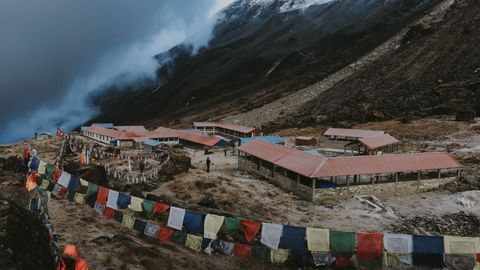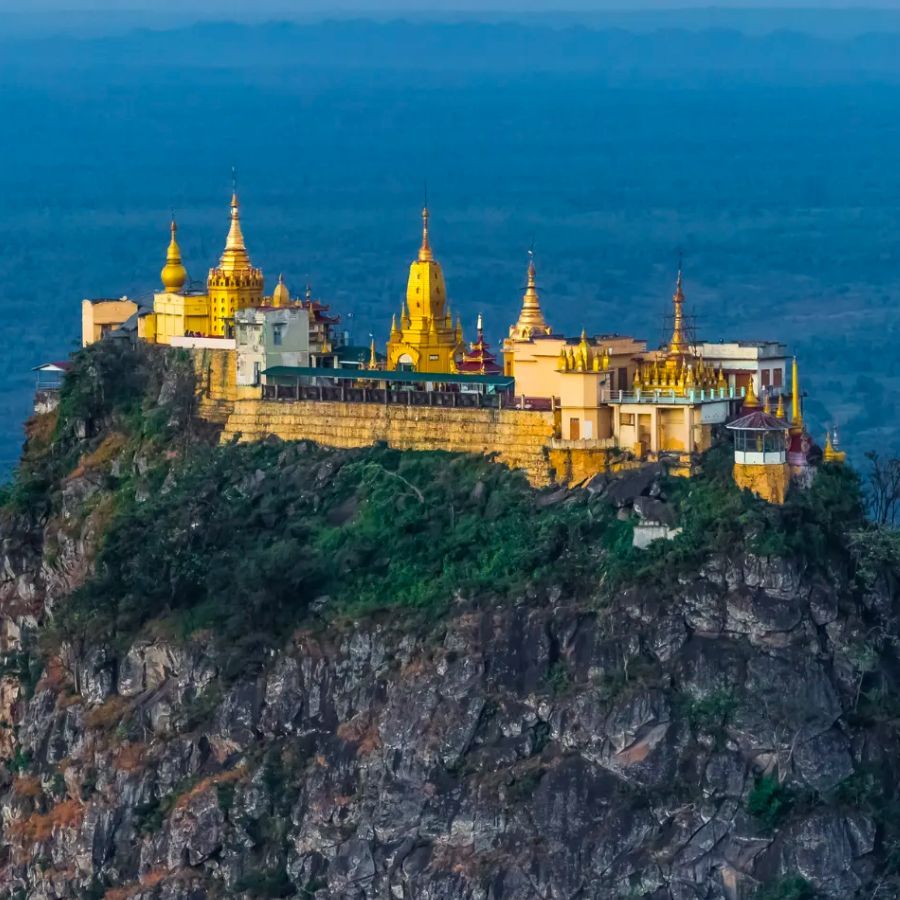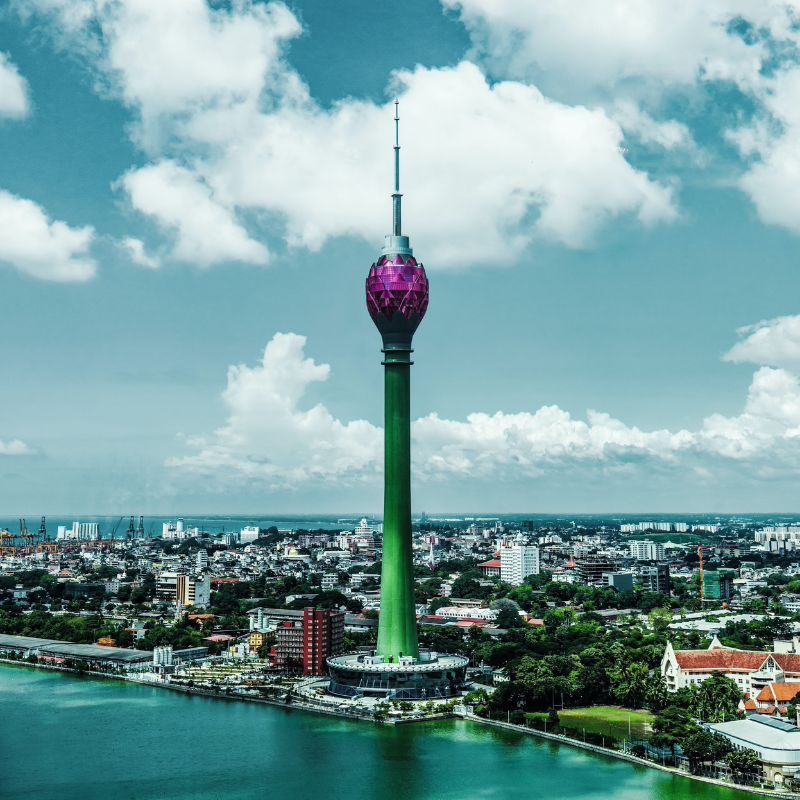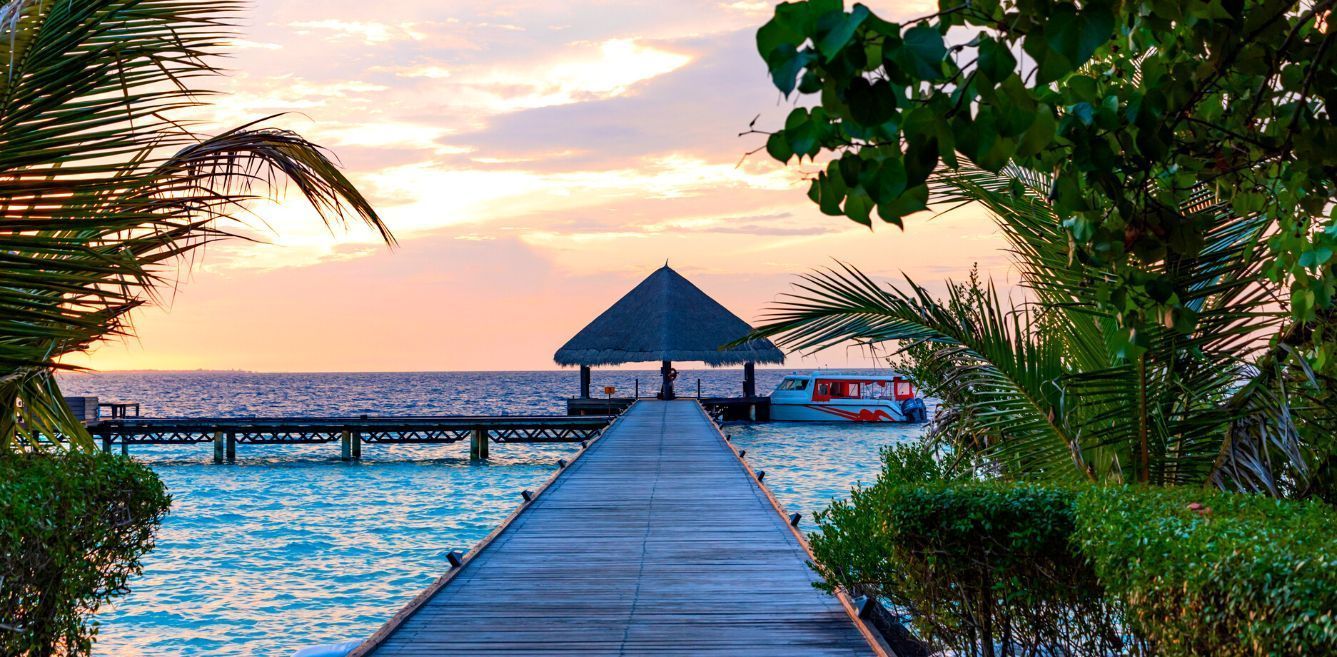
Among the most popular treks in Nepal, the Annapurna Base Camp trek attracts adventure enthusiasts from across the globe. If you want to embark on this journey of a lifetime, check out our complete guide to plan your trip.
All you need to know about the Annapurna Base Camp trek
The Annapurna Base Camp trek takes you through some breathtaking views of the mountains and valleys, including local flora and fauna, such as oak trees, rhododendron plantations, pine forests and rice fields. The route begins in Pokhara, a hill station located about 200 kilometres from Nepal’s capital, Kathmandu. From here, trekkers go up to Annapurna Base Camp and come back to Pokhara, to end their trek. The route goes up to an elevation of 13,549 feet (4,129 metres), from where views of the Annapurna Massif, Hiunchuli, Machhapuchhre and Annapurna South are a treat for sore eyes!
The total time this trek takes can take anywhere between seven to 12 days. It depends upon a lot of factors, such as your speed, whether you’re trekking alone or in a group, and which trekking group you’ve opted for (if you are booking one). However, if you are an experienced trekker, the route will not take you more than seven days to cover.
Do keep in mind that from April 1, 2023, you will need to hire a licensed guide if you are going on any trek in Nepal, even if you are travelling solo, according to a report in Al Jazeera.

Though a moderate-difficult level trek, you can opt for the Annapurna Base Camp route if you are physically fit. However, any prior trekking experience will be an added benefit. If you have health issues or find it tough to climb heights, we’d recommend getting a clean bill of health from your doctor to avoid complications during the trip.
Book your stay at Bar Peepal Resort Pokhara on Booking.com
Book your stay at Bar Peepal Resort on Agoda
What a seven-day itinerary of the trek may look like for you
A rough itinerary (Pokhara-Annapurna Base Camp-Pokhara) for seven days will look like this:
Day 1: Pokhara to Nayapul to Ghandruk

Begin your day early in the morning, and head to Nayapul from Pokhara. You can opt for local buses (which might get uncomfortably full if you are not used to crowds), or hail a cab to cover the distance. The views, however, are stunning and will make up for any discomfort you feel. Overall, to reach Nayapul, it will take two hours, and that’s including breakfast and bathroom breaks.
Once you are in Nayapul, begin your trek to Ghandruk. The first couple of hours of the walk will take you on dirt roads, which is a relatively easy journey as compared to what lies ahead. Soon after, you’ll ascend stairways and walk through mountain villages. The climb is gradual, but it can end up being a bit tiring. So, take ample rest at the many tea houses and rest stops along the way. The distance takes about six-seven hours to cover, and you’ll reach well in time to witness the slow village life before having your dinner and retiring for the night.
Day 2: Ghandruk to Chhomrong

Wake up early and refresh yourself with the views that surround you. Eat well before you begin the climb for the day because you’ll need the energy to sustain yourself on the route. If the day is clear, you’ll see views of the ‘fishtail’ mountain (Machhapuchhre), Annapurna South, Hiunchuli and Gangapurna.
Keep in mind that leaving Ghandruk can be a bit confusing since the pathways are like a maze. So ask for directions and follow a map if you need to. The terrain that you’ll walk on Day 2 includes terraced fields, villages, rice plantations and quarries. It includes steep climbs and gradual descent, culminating in a relatively easy last leg of the day’s walk to Chhomrong. The village is a beautiful spot located in the lap of the Annapurna and is surrounded by magnificent scenery. The total walk for the day will be between six-eight hours.
Day 3: Chhomrong to Dovan
Even though you will probably be tired after hours of walking, we suggest waking up early to witness the beautiful sunrise at Chhomrong. The first rays of the sun cast a golden glow on the snow-capped mountains and will make for a memorable sight.
After a hearty breakfast, aim to leave Chhomrong before or around 8:00 am to complete the hike (roughly seven hours) before sunset. When you leave the village, you’ll have to present your permit at the checkpoint. From here, the first leg of the day’s journey is a relatively easy downhill trek. The tough section of this route will be the ascent to Sinuwa village. From here, the walk to the Bamboo forest will feel relatively easy on your fatigued body. The route will be complete with enchanting land covered with woody vegetation and hopefully clear skies (since it depends entirely on the weather). The final leg of the journey, which takes you from Bamboo to Dovan, is the toughest part of the day’s trek. The air will get noticeably thinner, so you will need to be careful about your health.
Day 4: Dovan to Machhapuchhre Base Camp to Annapurna Base Camp

Again, aim to get an early start to your day with a filling breakfast, because the trek on Day 4 will not be easy. Leave Dovan before 8:00 am and exit the village. The best part of this leg of the trek will be the views — not long after you leave, you will find yourself in a spectacular valley surrounded by towering peaks on all sides. You may also see snow on the ground if the weather is right.
Walk on terrains that lead you through routes with an emerald green river and rocky paths, which is magical as well as tough. You’ll be quite breathless by this time, so stop at Deurali to catch a break. Post that, resume your ascent towards Machhapuchhre Base Camp. It is here that you will get to see magnificent views of the Annapurna (8,091 metres) and Machhapuchhre (6,997 metres) mountains. Though the route is challenging, the views make up for all the fatigue. Take some rest and have lunch before you complete the final leg of the climb, which will take you to the Annapurna Base Camp.
Surrounded by breathtaking views of snow-capped peaks and deep valleys, you’ll be overwhelmed with emotions, especially joy. Explore around the base camp for a bit before you retire for the night at the base camp itself.
Day 5: Annapurna Base Camp to Sinuwa Village
This is when you bid a final goodbye to the Annapurna Base Camp, so be sure to wake up early and soak in the sunrise and mountain views around. It’ll be an otherworldly experience watching the sunrise while standing at the height of 4,129 metres. All the fatigue will vanish, and you will be set for the downhill journey that lies ahead.
After breakfast, start descending to the Machhapuchhre Base Camp. Depending on the weather, you could be met with either icy pathways and wind or clear skies and a cool breeze, so be prepared for everything. The walk is downhill until you reach Bamboo. From Bamboo, there is a steep ascent to Sinuwa. Here you will have to push yourself a bit, as once you are there, you can easily reach lower Sinuwa with a 20-minute walk. This last climb will make the following day easier. Once you reach the village, call it a day with a filling meal and restful sleep at one of the lodges in the place.
Day 6: Sinuwa to Chhomrong to Jhinu

Wake up to the beautiful views and enjoy your breakfast, because the walk will be much easier as compared to the last few days. Leave Sinuwa in the morning and begin your uphill climb to Chhomrong. From here, you’ll walk for 90 minutes towards Jhinu, where the hot springs will feel like heaven for your exhausted limbs!
Enjoy a filling dinner after walking around the area, and retire for the night. You’ll be refreshed for the final stretch of your walk the next day.
Day 7: Jhinu to Siwai to Pokhara
The journey this day will feel like a cakewalk after what you’ve been through over the rest of the week. Leave in the morning to walk towards Siwai, which is the final point of the trek. The walk should take between three to four hours.
Once in Siwai, board a bus or a taxi to reach Pokhara, where you can either spend the night or continue your journey back home.
Book your stay at Hotel Kaavi Pokhara here
Note: While this is a rough itinerary of what your seven-day journey will look like. The destinations you stop at may differ based on the trek group you’re opting for. Even if you’re travelling sans a group, you can modify the itinerary based on how much stamina you have to cover certain distances. You’ll still be able to reach Pokhara on the seventh day, as long as you maintain a steady pace throughout.
How much does the trek cost?
Depending upon the travel agent and/or the trek groups you book, the average cost of the trip begins at about INR 30,000.
Best time to visit the Annapurna Base Camp
The best times to go for the trek are October-November and April-May. This is because the weather conditions are generally dry and not too cold, making trekking a pleasant experience. The temperature range at the camp around this time will range between 16 degrees to 4 degrees, but it can go lower depending on the weather conditions.
How to reach Pokhara to begin the trek
By Air
Pokhara, which is the starting point of the trek, is connected to New Delhi (India) and Kathmandu (Nepal) by air.
By Road
The hill station is about 200 kilometres (seven hours almost) by road from Kathmandu, and you can book a cab or board a bus to reach there.
By Train
There are no railway services in Pokhara.
Health factors to keep in mind
- You should not have a pacemaker implant
- The trek is not ideal for those who suffer from diabetes, bronchial asthma, high blood pressure or heart diseases
- You should check with your doctor or the group instructor if you have sinus issues
- Ensure that your blood pressure and pulse rate are in the normal range (60-90 beats per minute for the pulse and 75-85/100-130 for blood pressure)
- You should not be suffering from kidney or liver diseases
How to pack for the trek
Before you leave for the trek, be sure you have the following things packed:
- Mandatory documents such as your ID, medical certificates, and necessary permits (unless arranged by the trek group)
- Rucksack with essentials such as rain cover, thermals, full-sleeved quick-dry T-shirts, trek pants, trekking shoes, comfortable socks, sunglasses, sun cap, woollen cap, gloves, trekking poles and headlamp
- Toiletries, cutlery, a water bottle and cup (you can get collapsible cups easily in the market), daily medication that you need along with precautionary medicines such as paracetamol, band-aids for nicks and cuts, avomine, combiflam, knee brace, crepe bandage, ORS and digene
Hero and Featured Image credit: Neha Maheen Mahfin/Unsplash
Related: Pack These Winter Trek Essentials For A Smooth Trekking Experience







